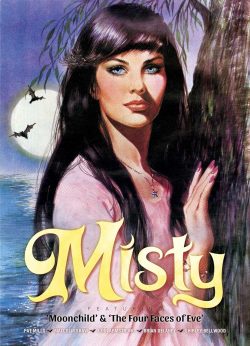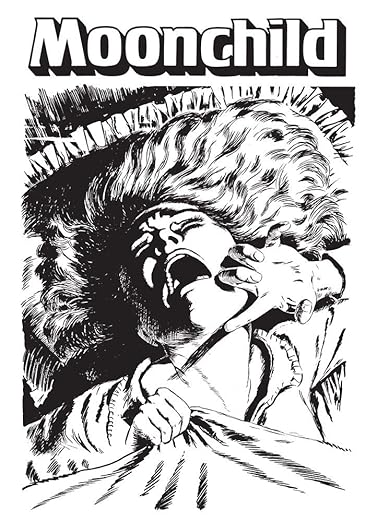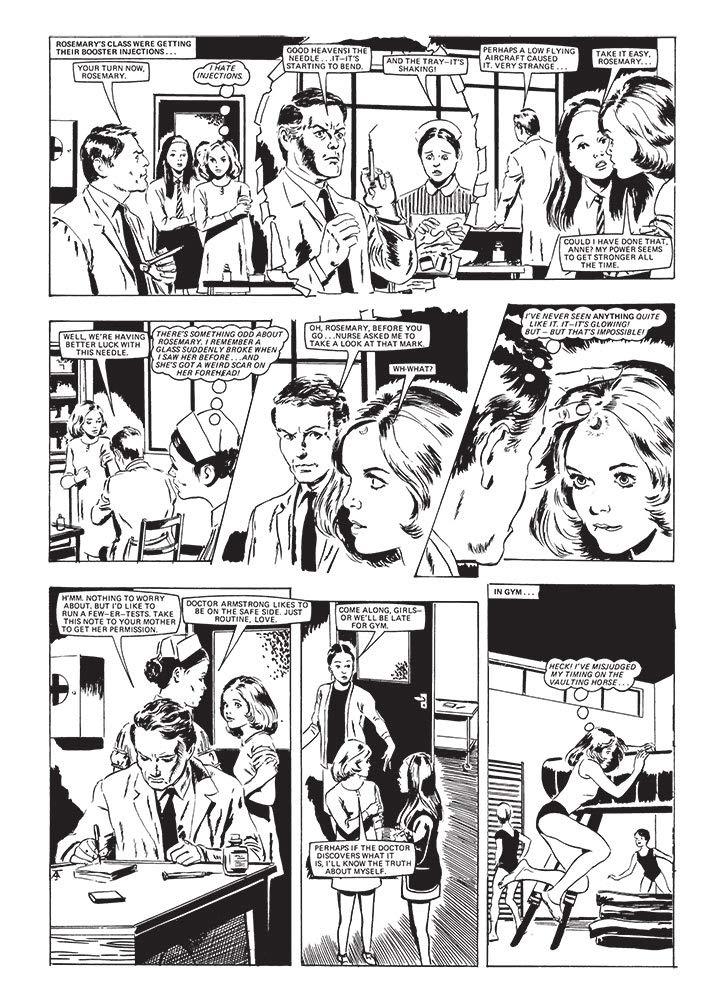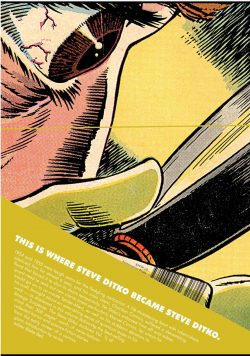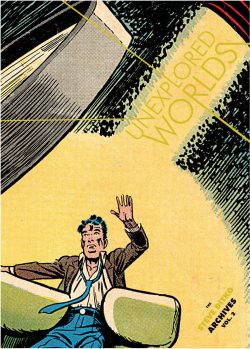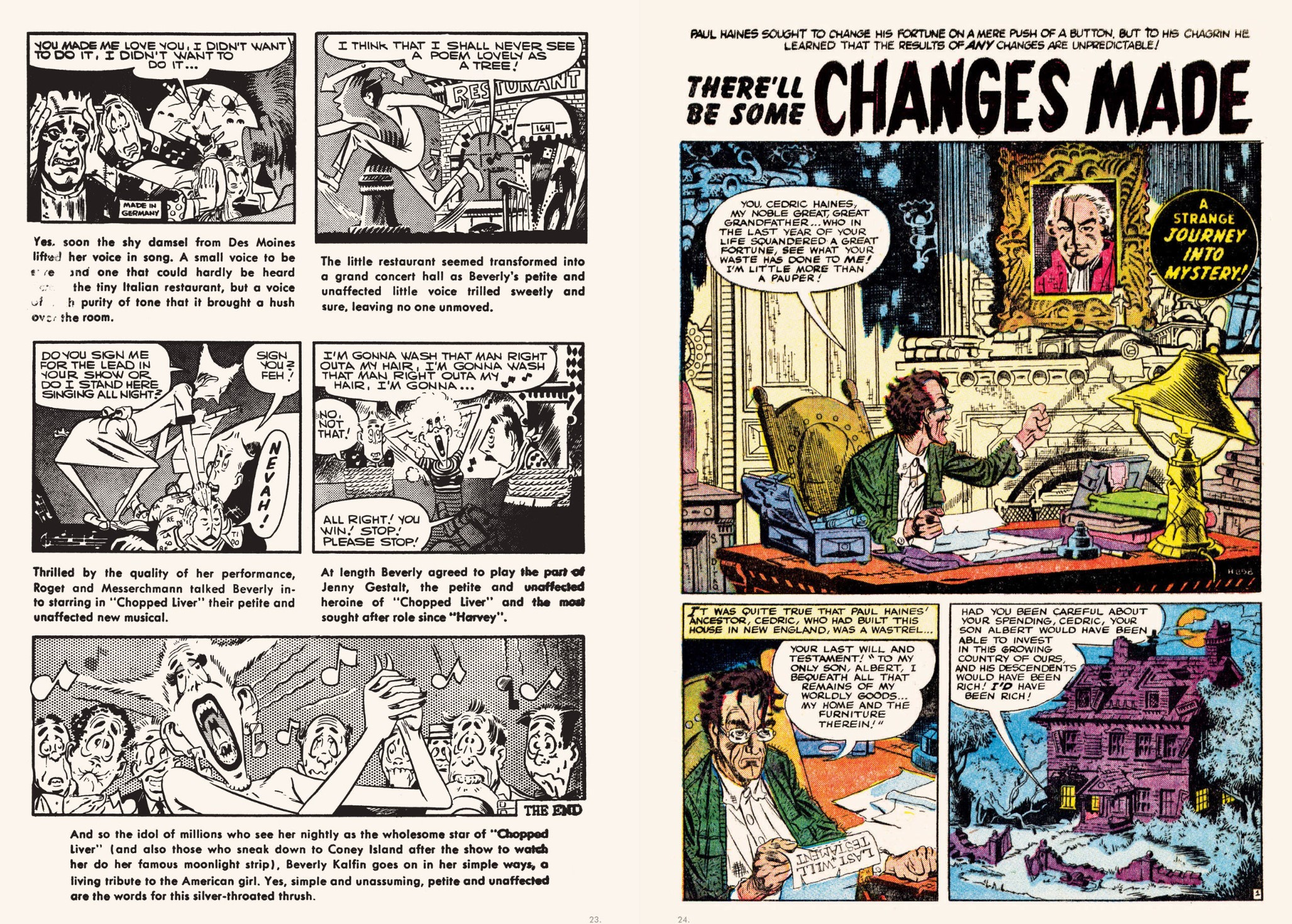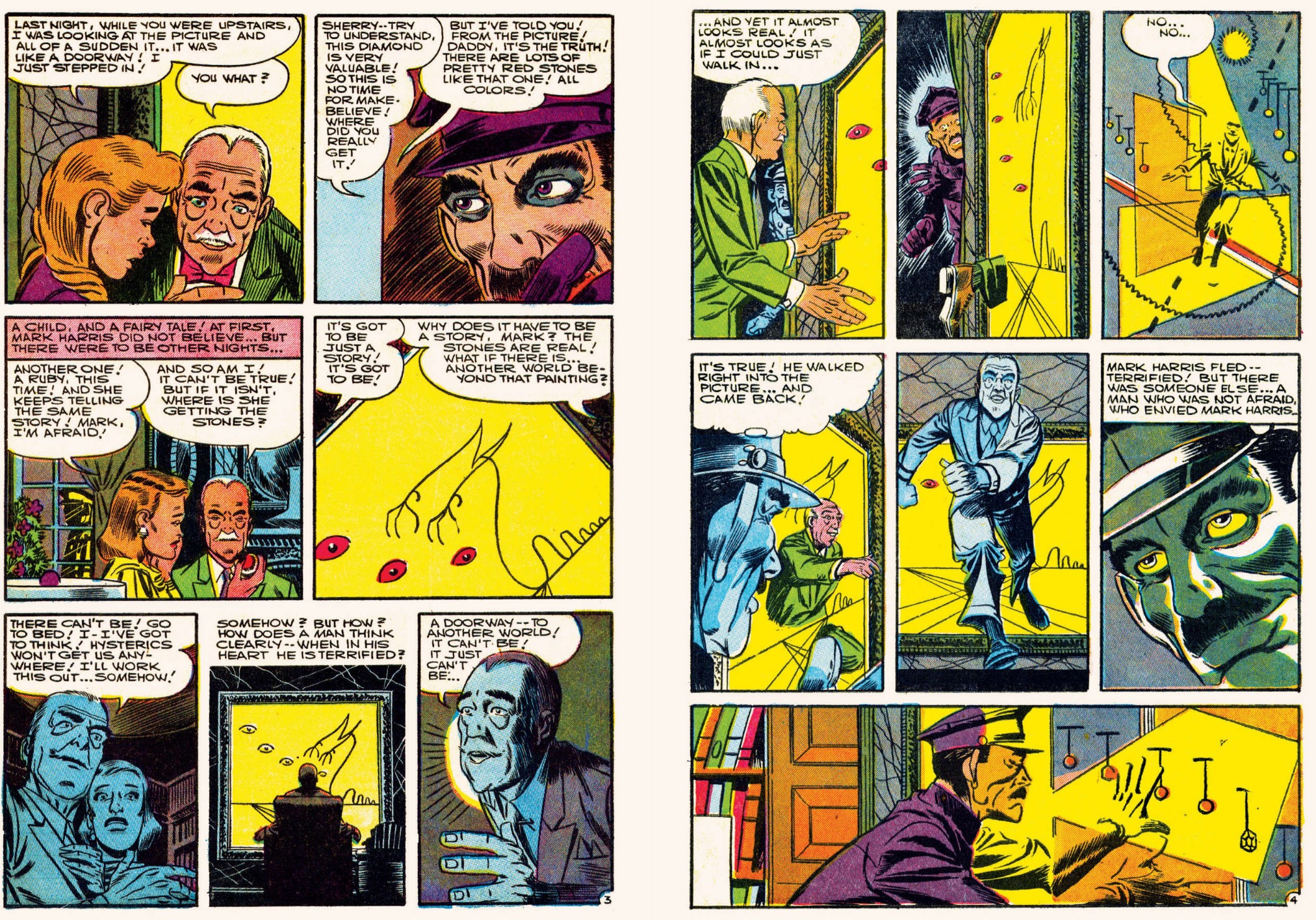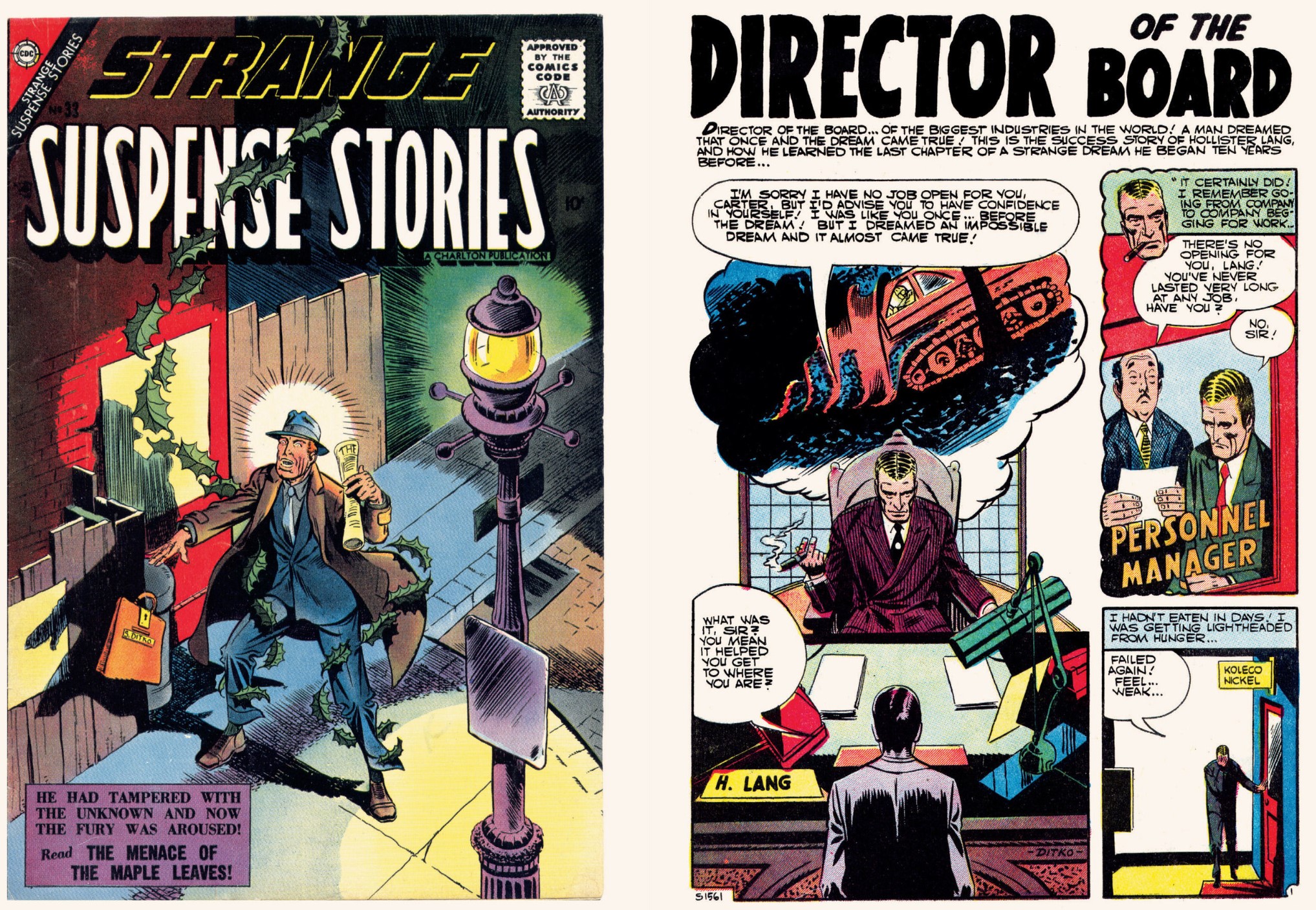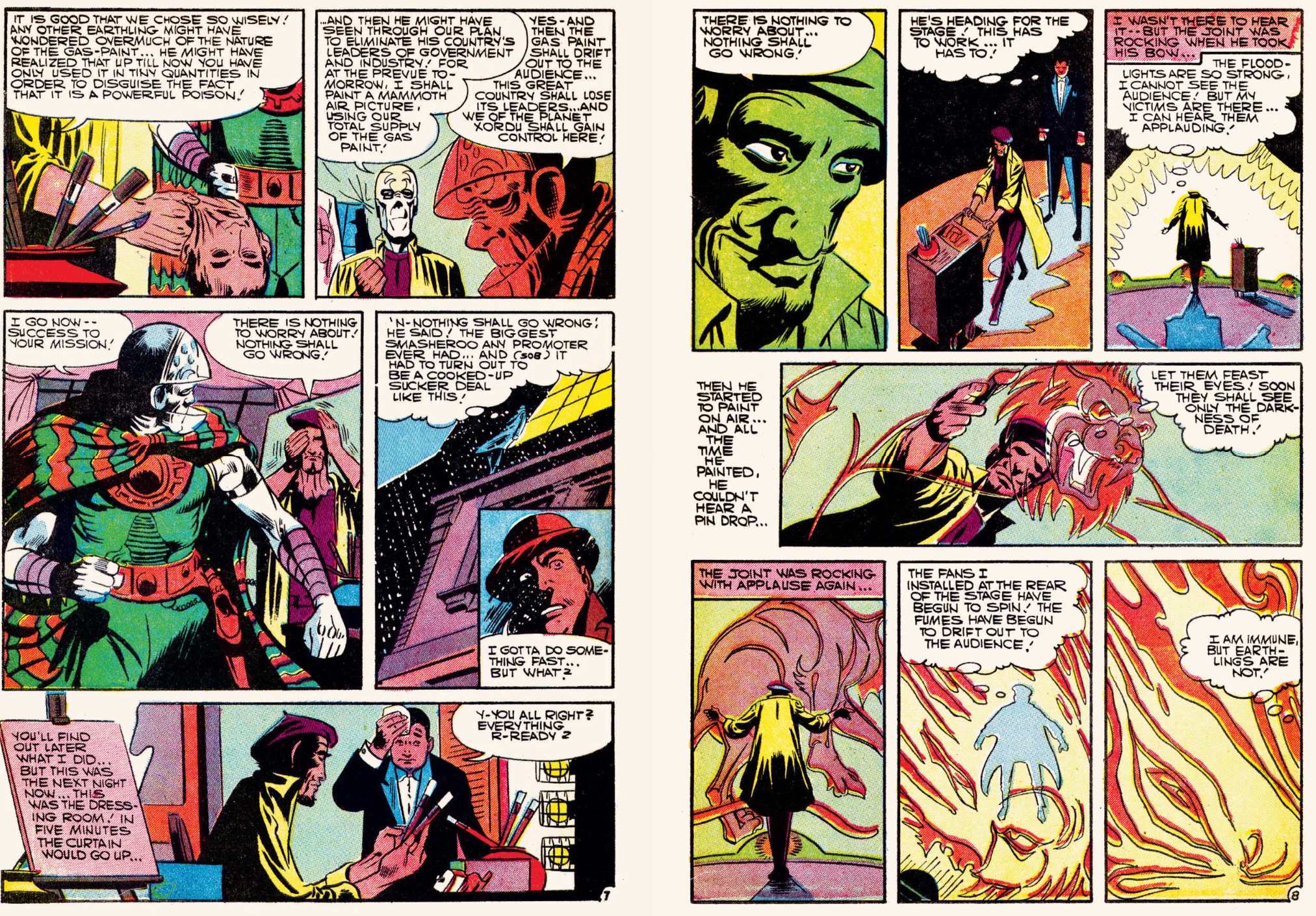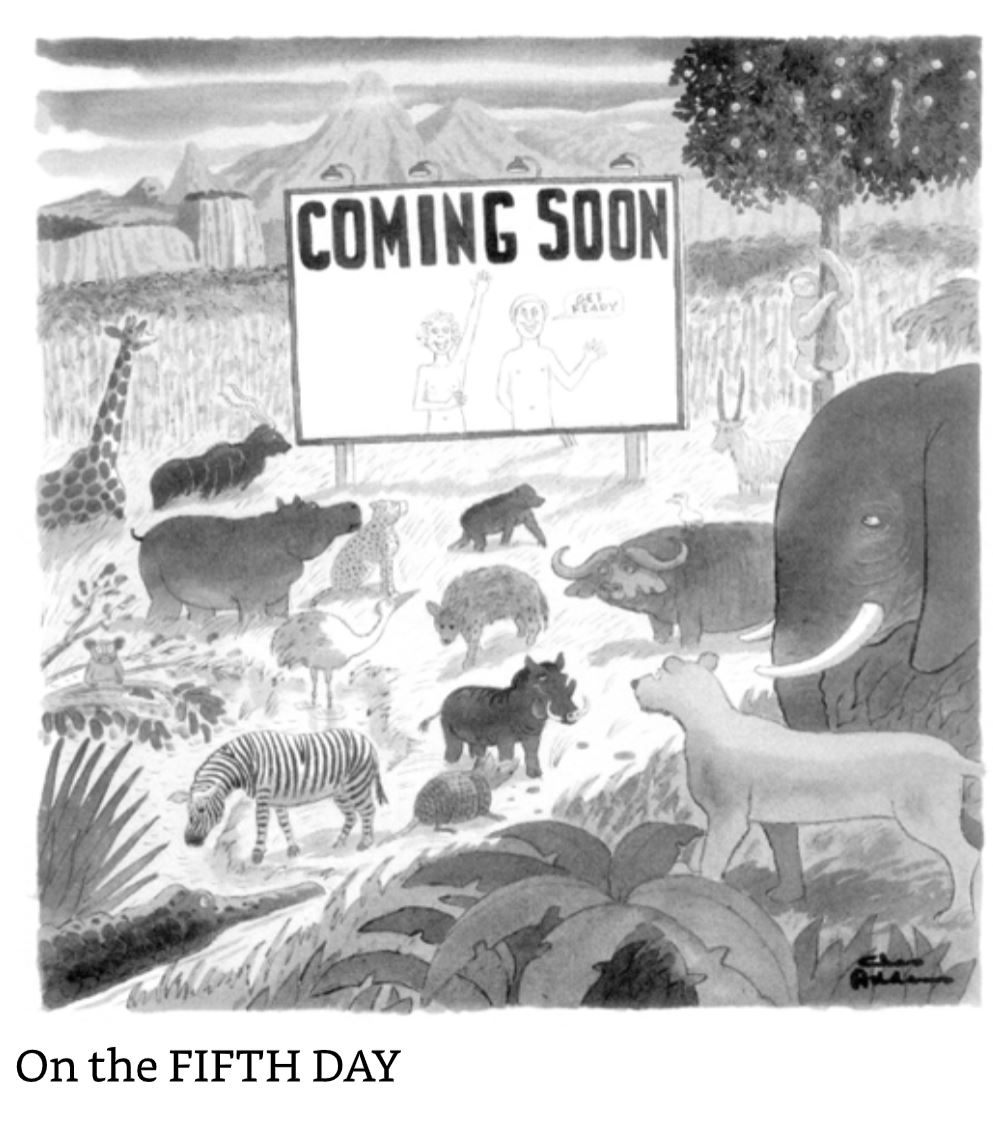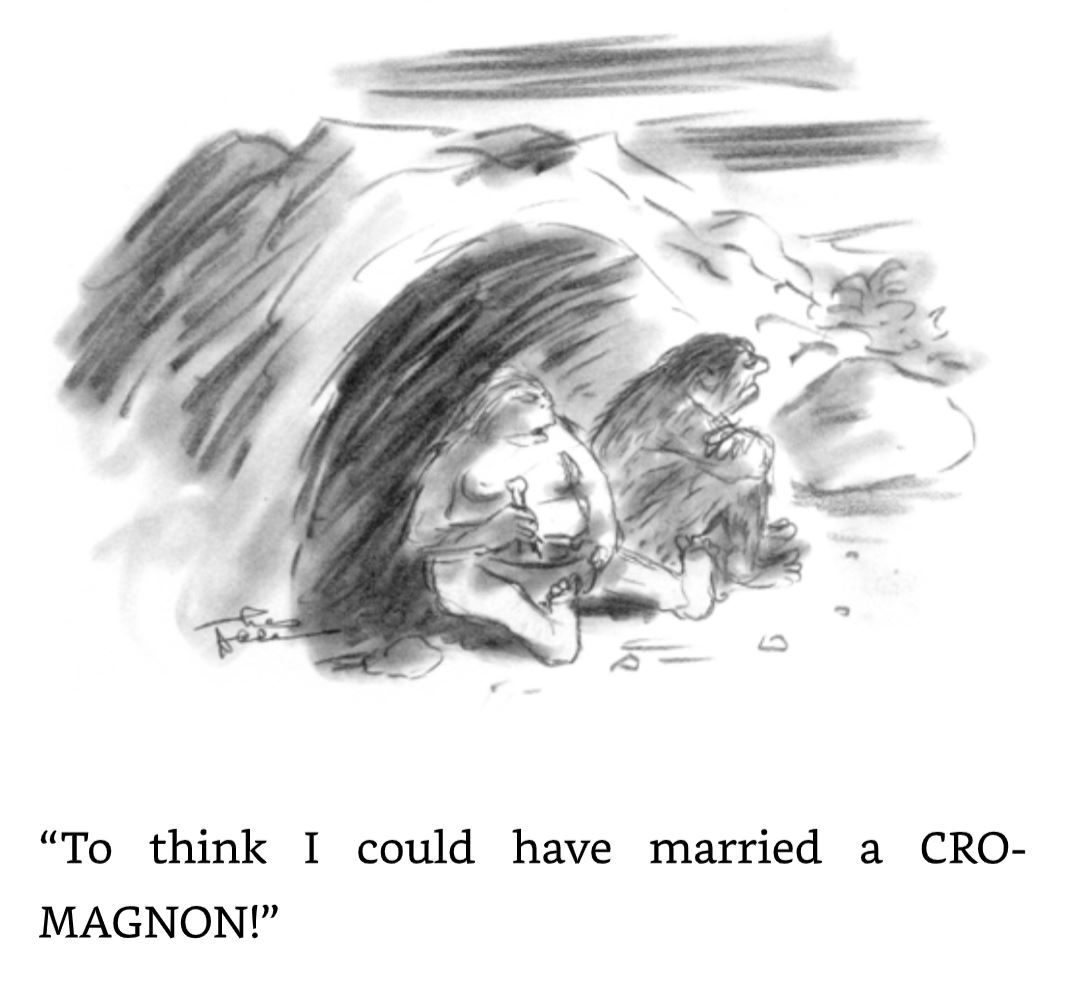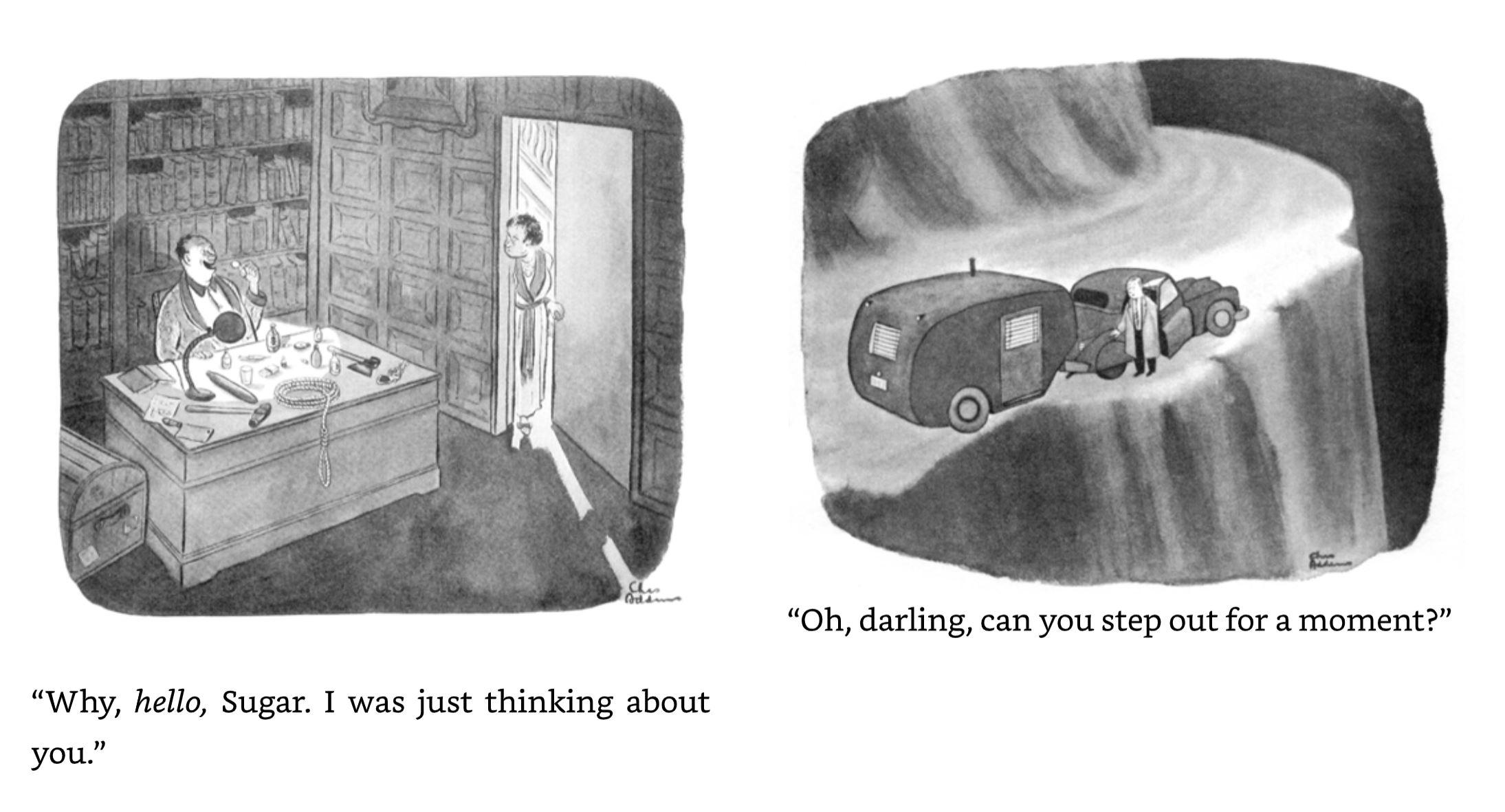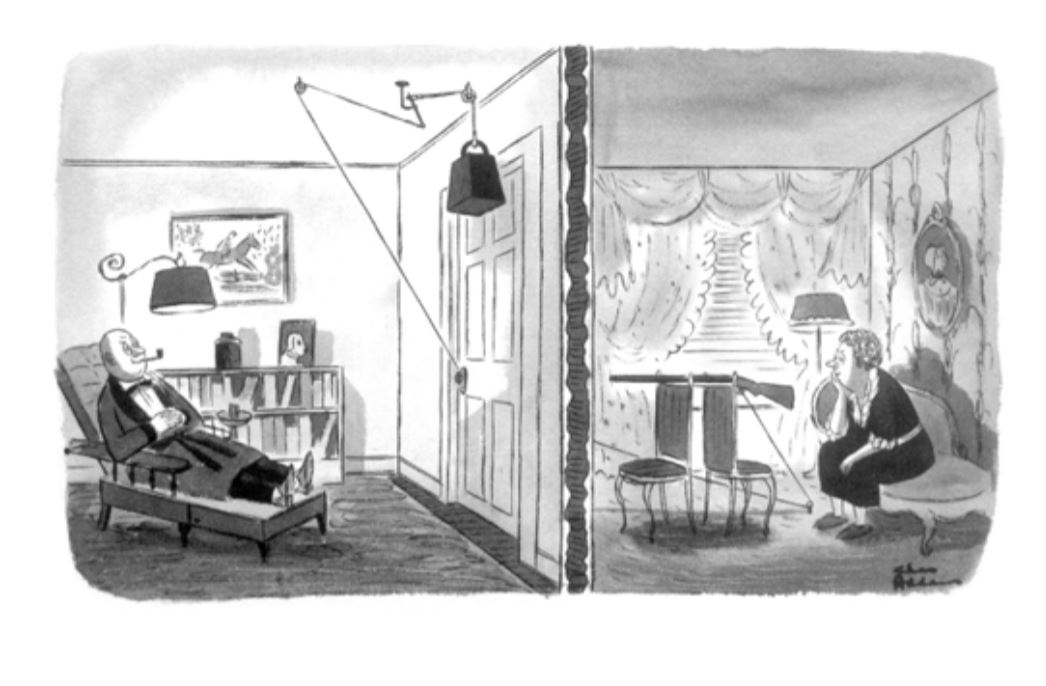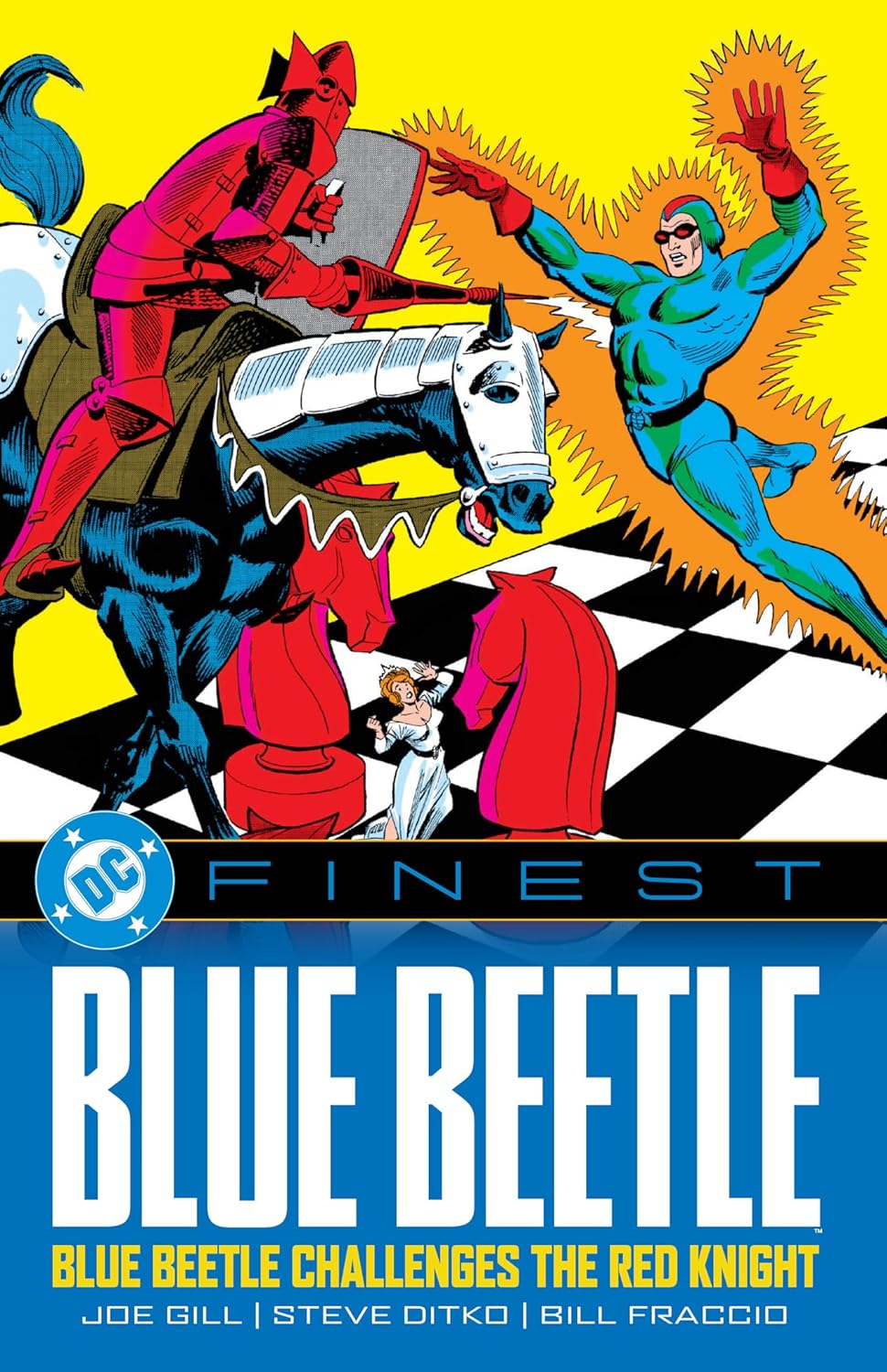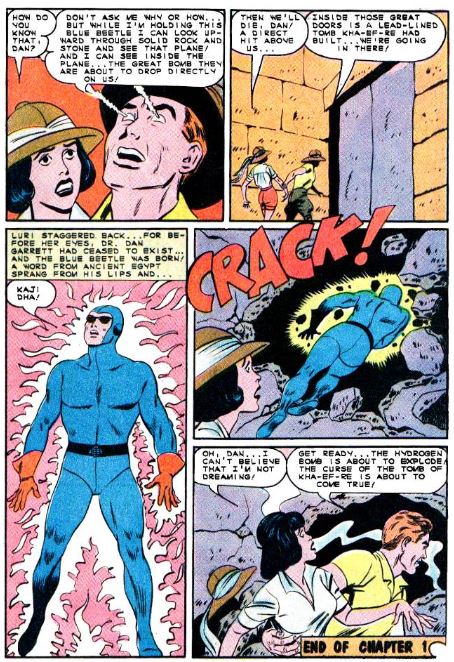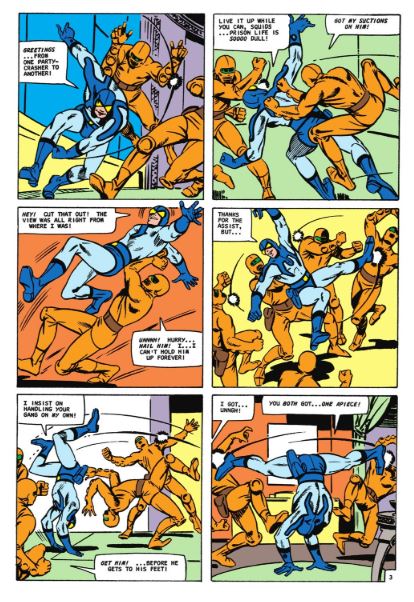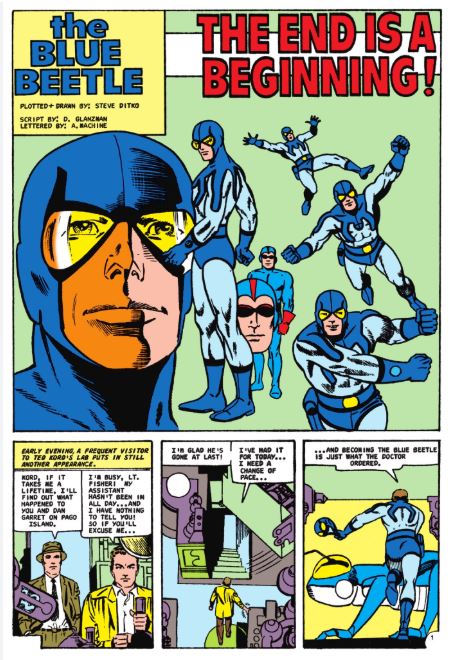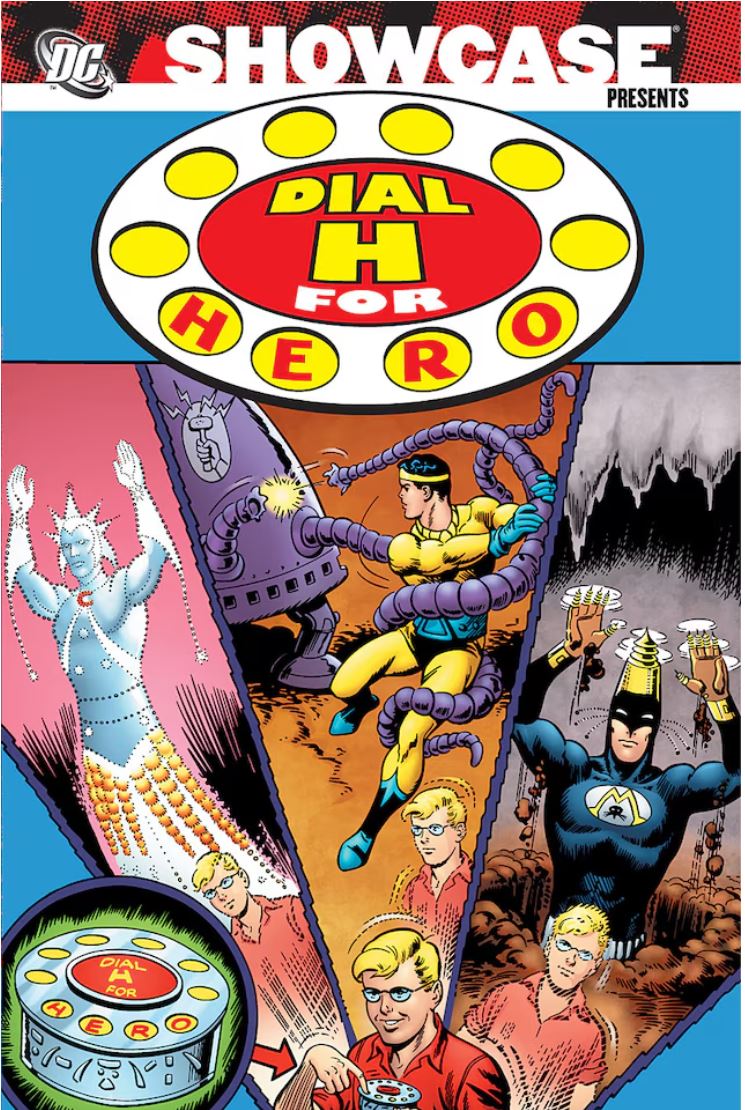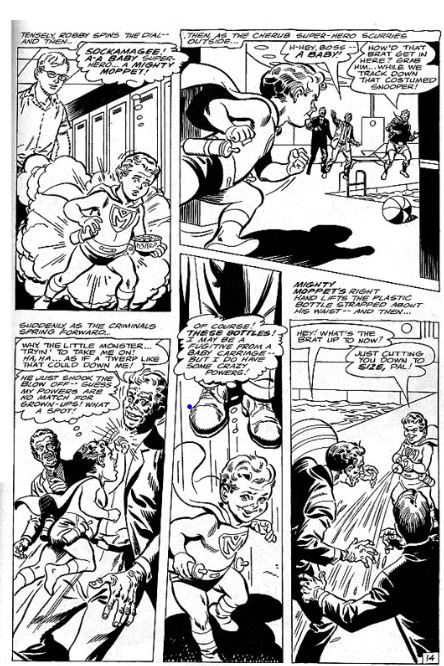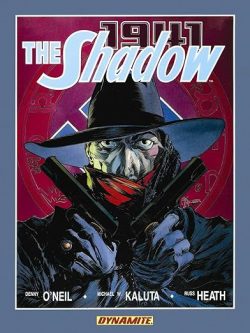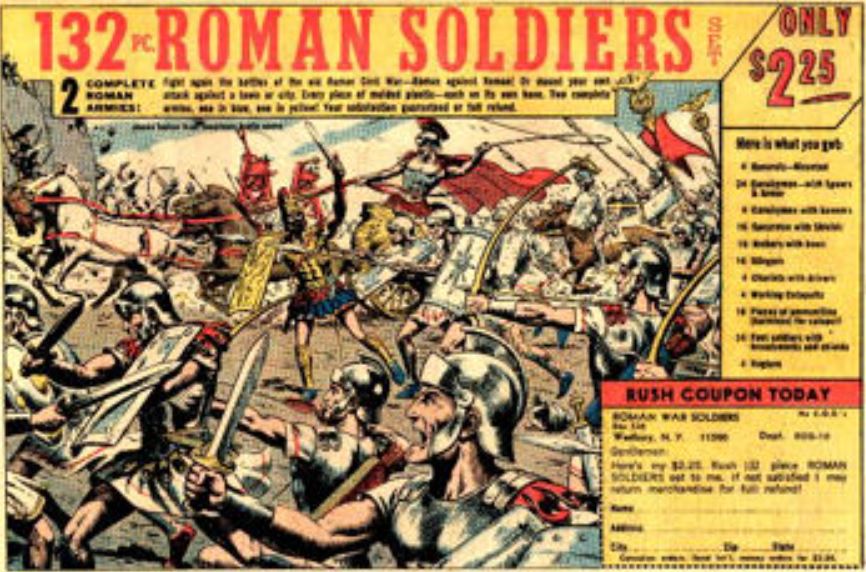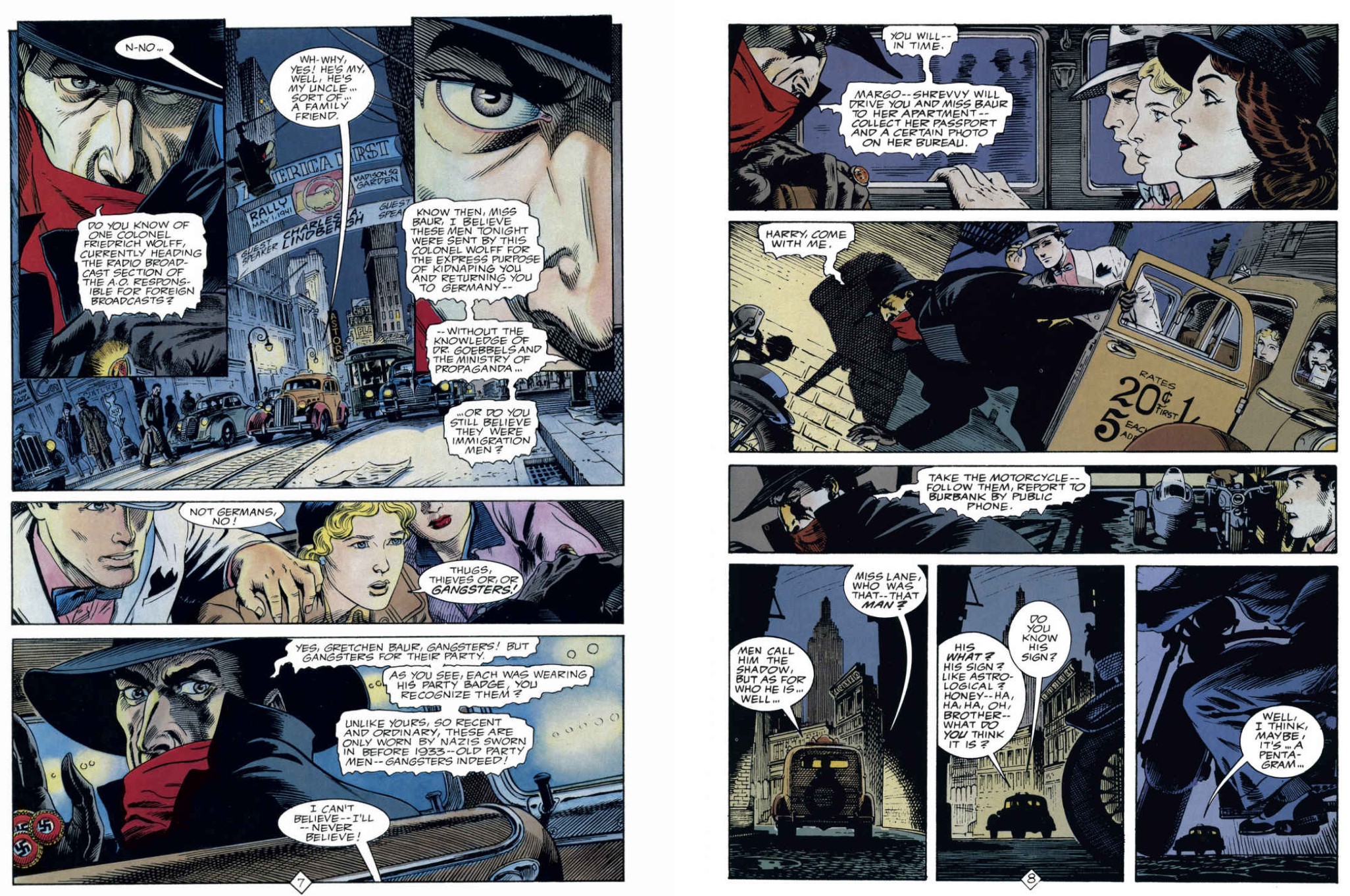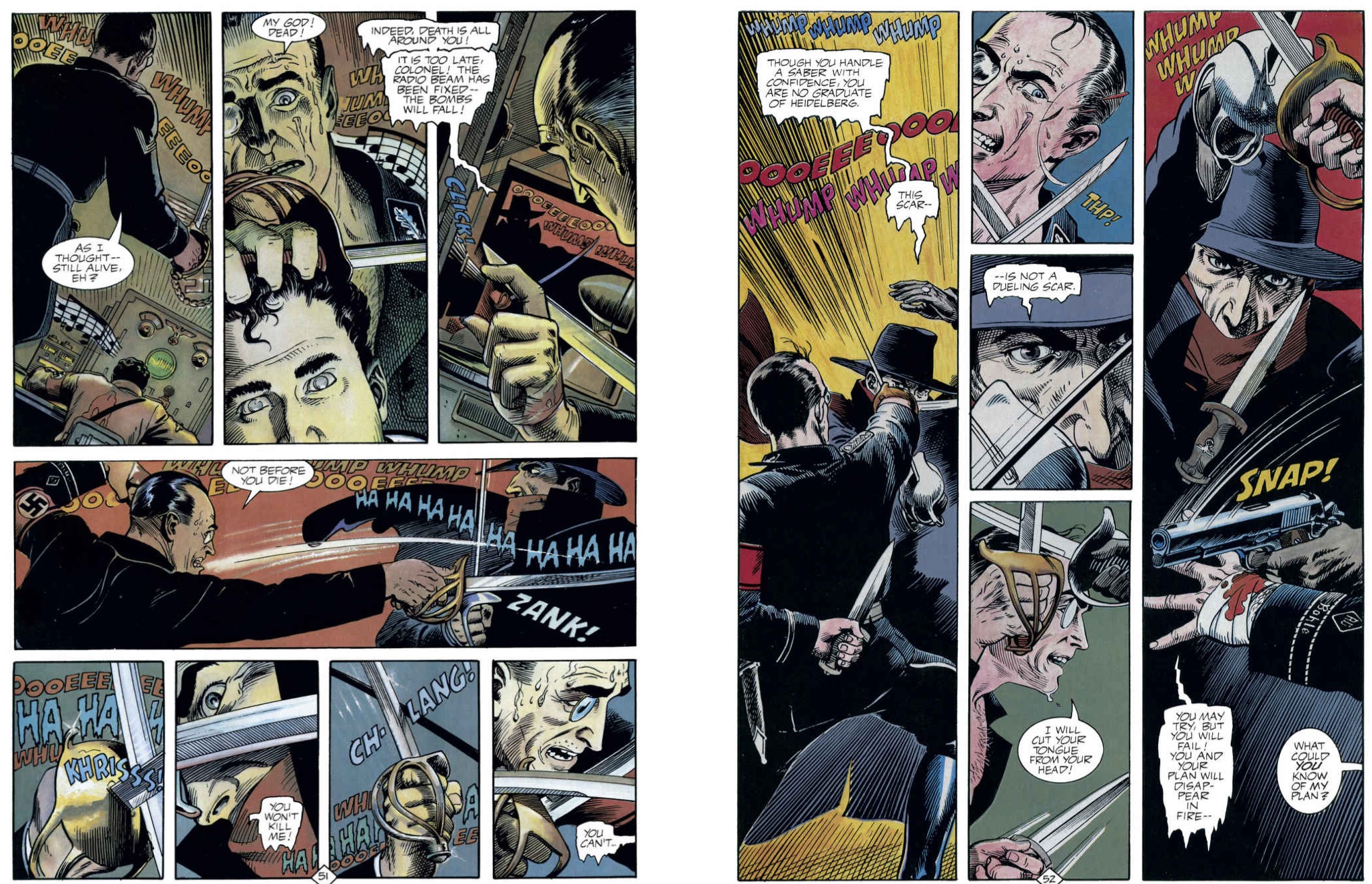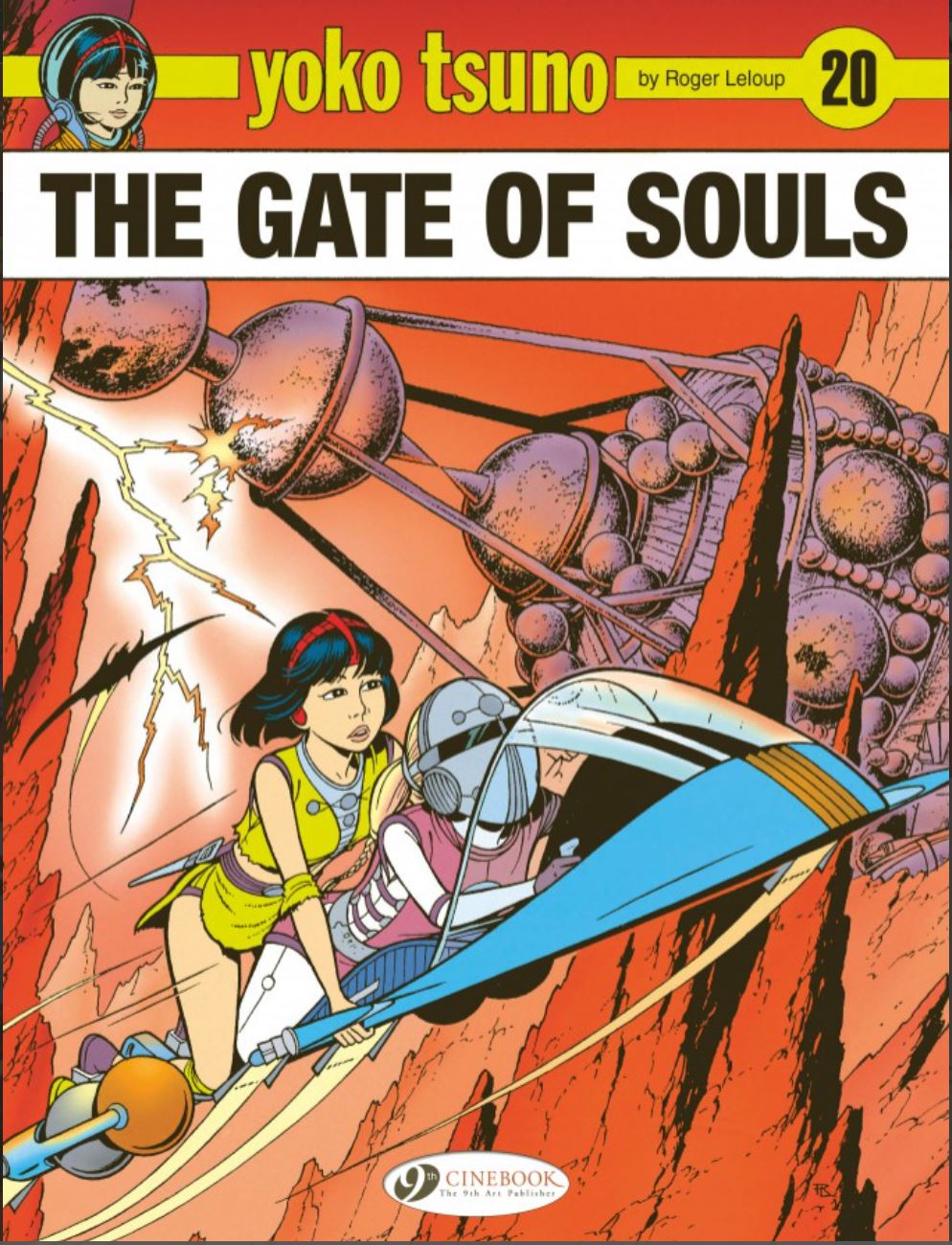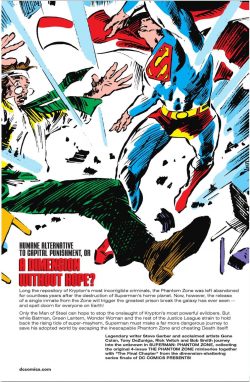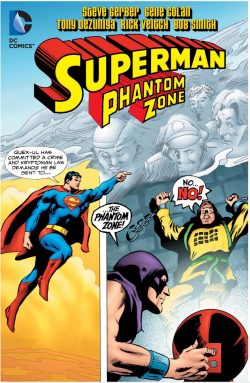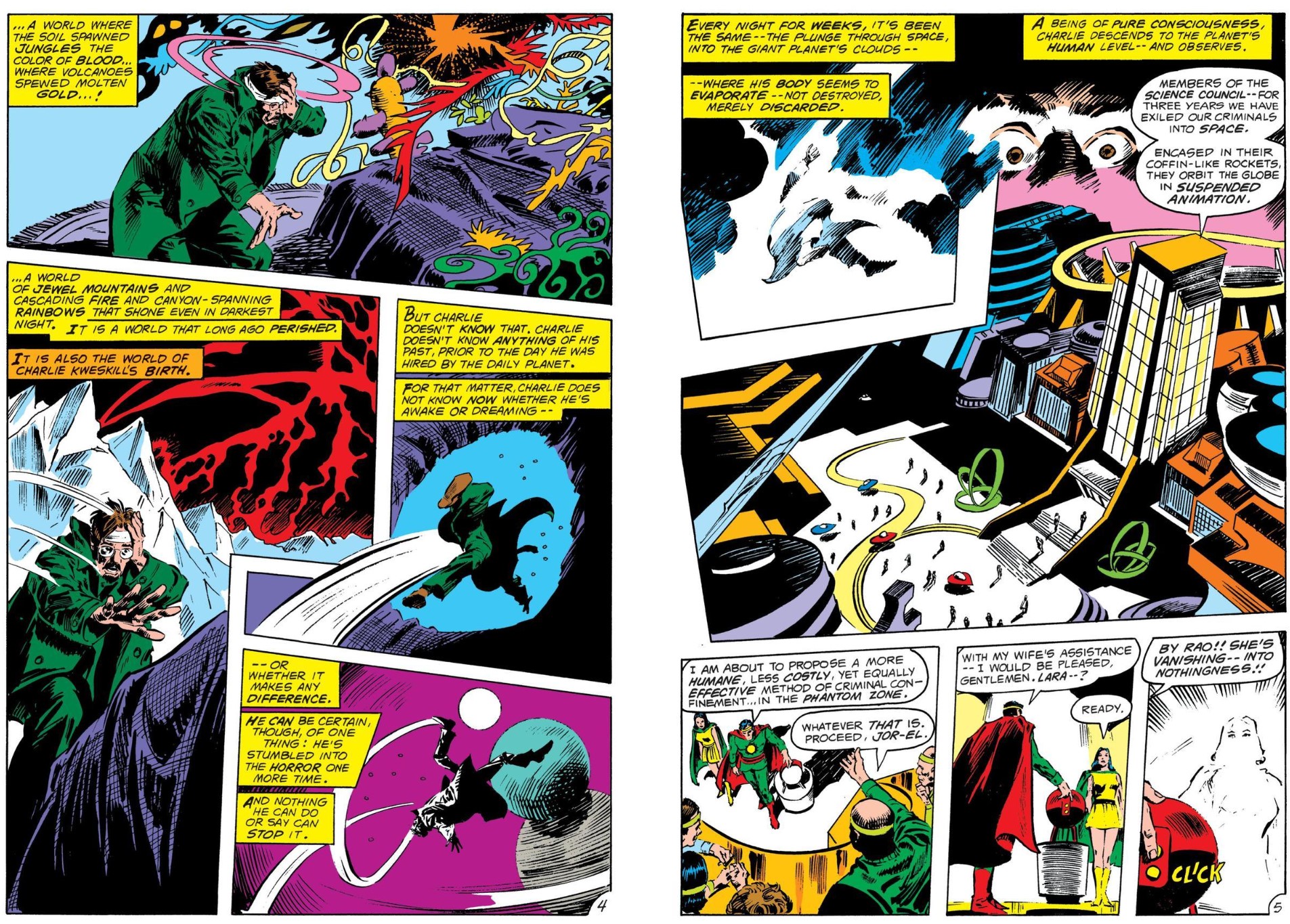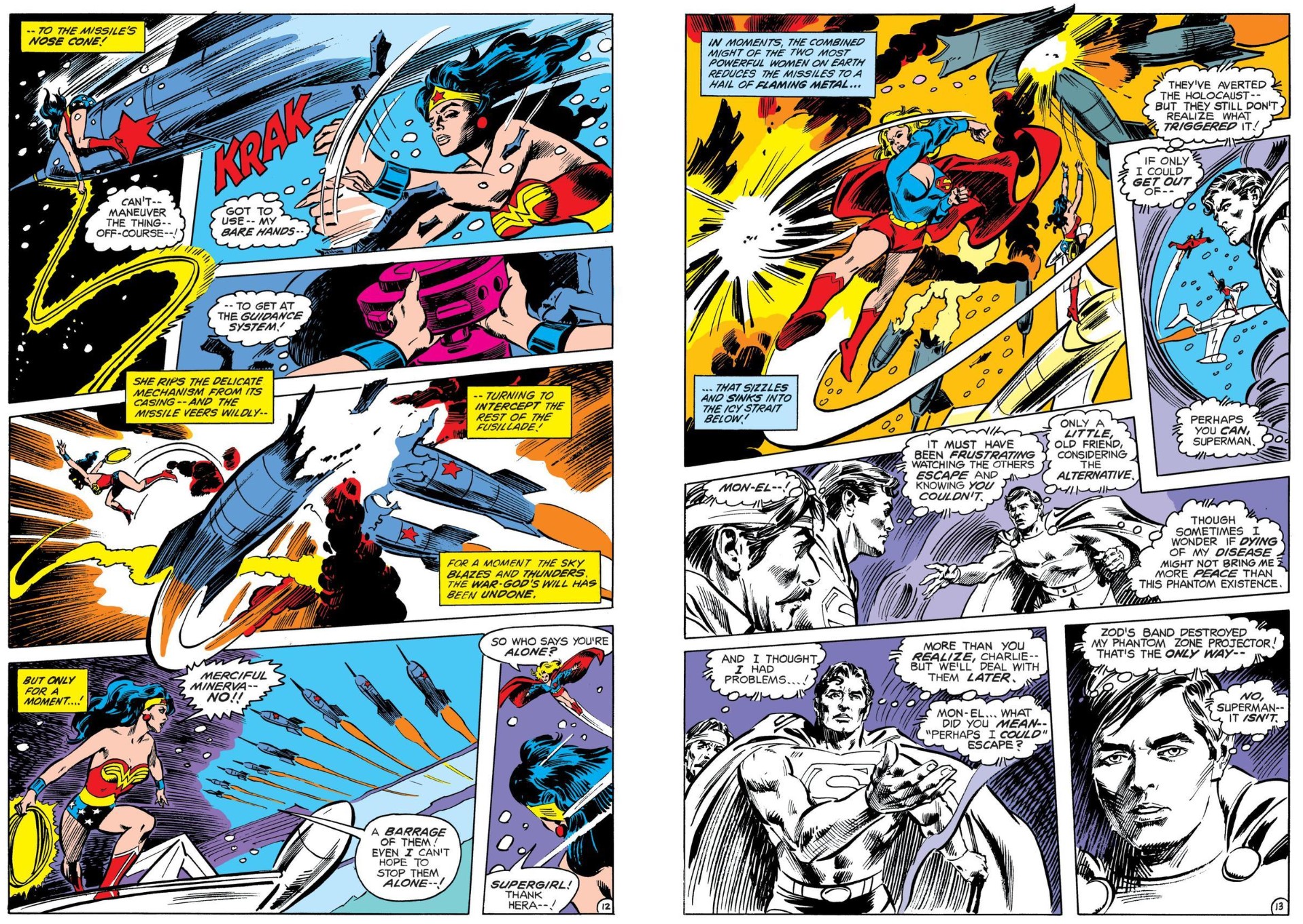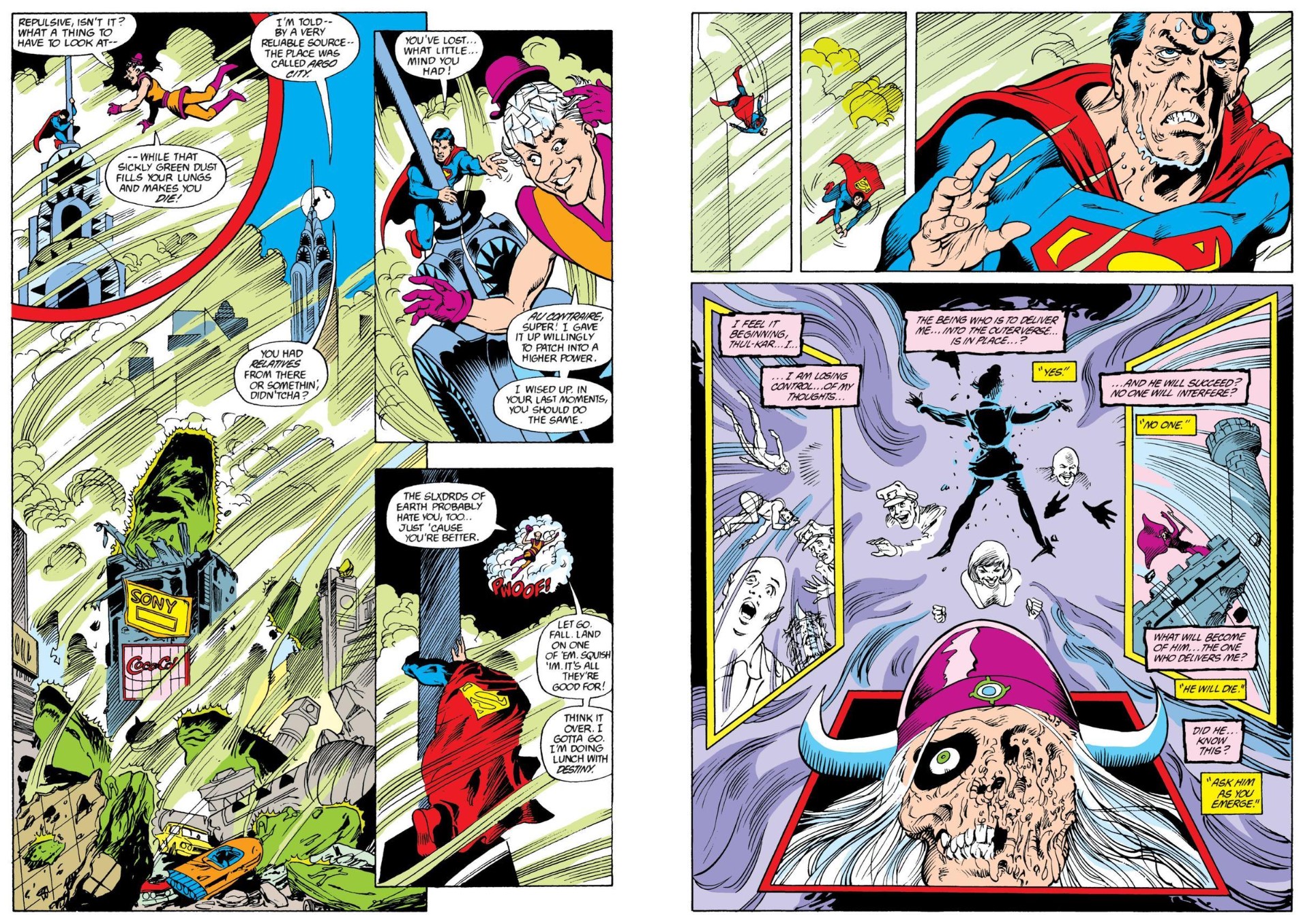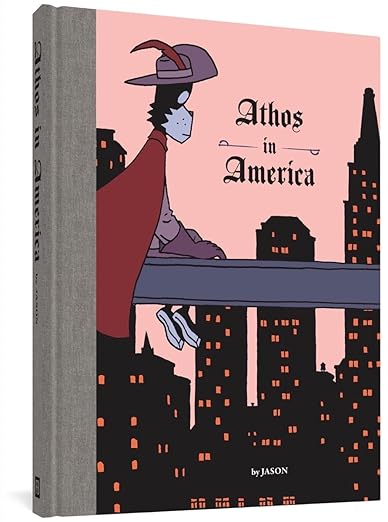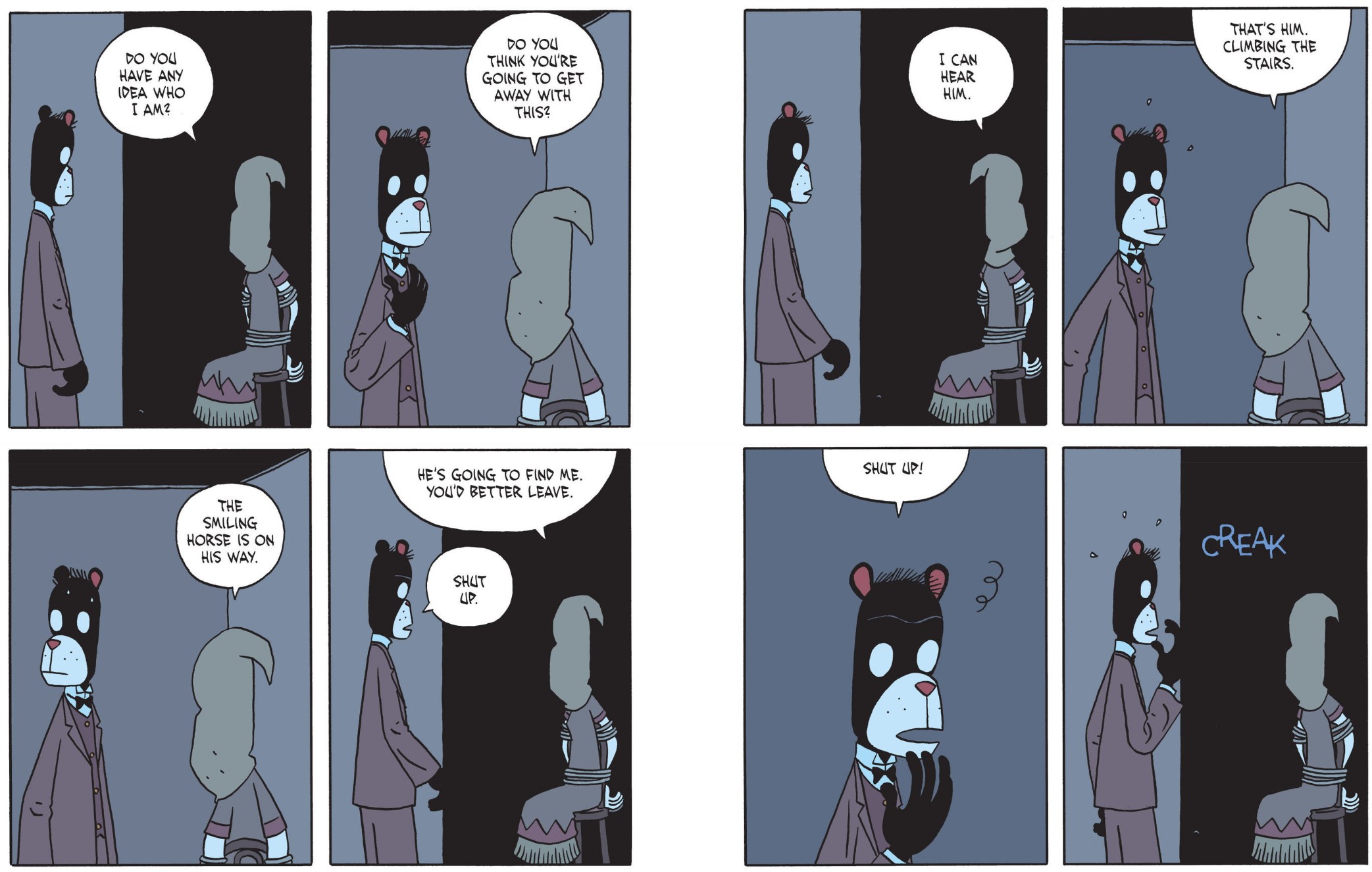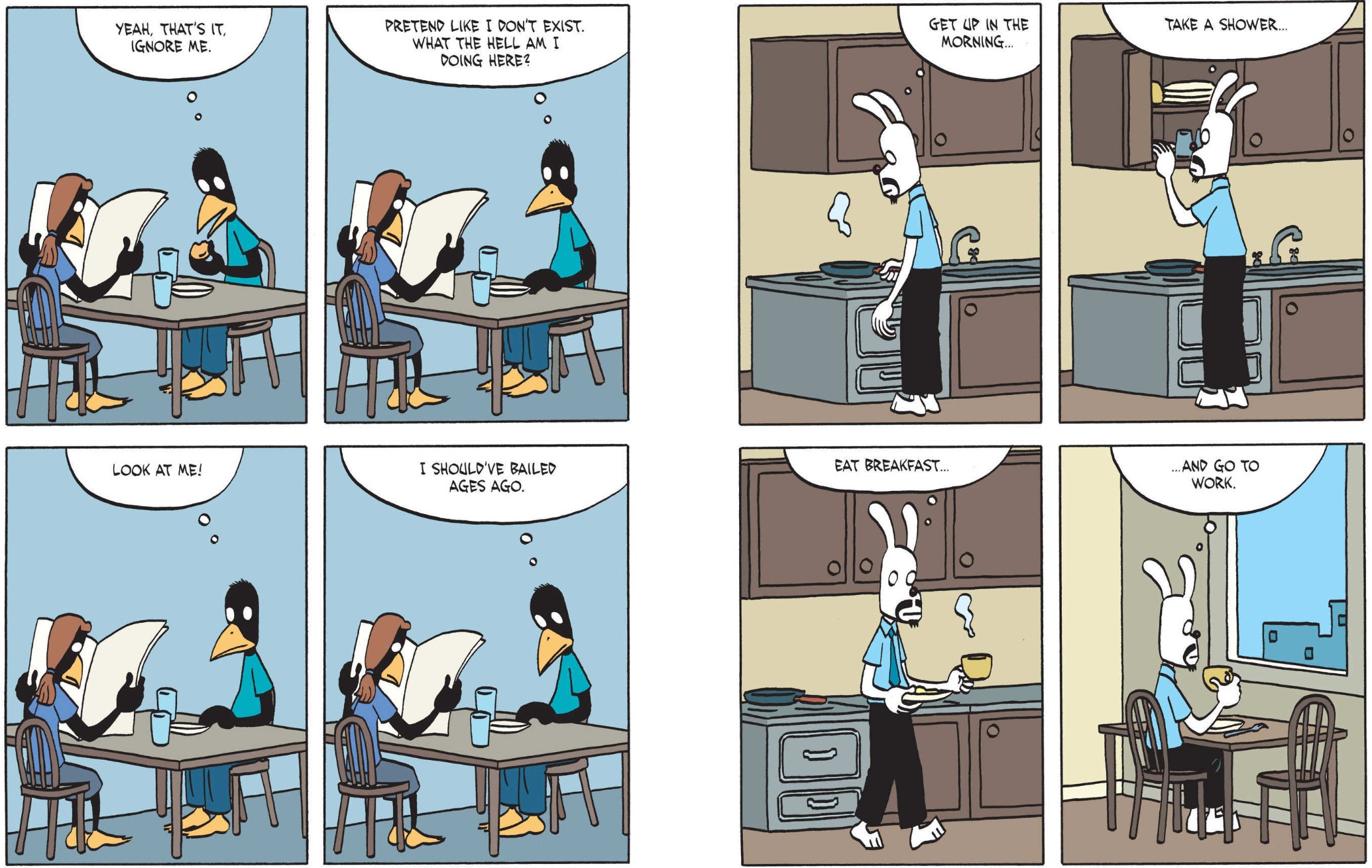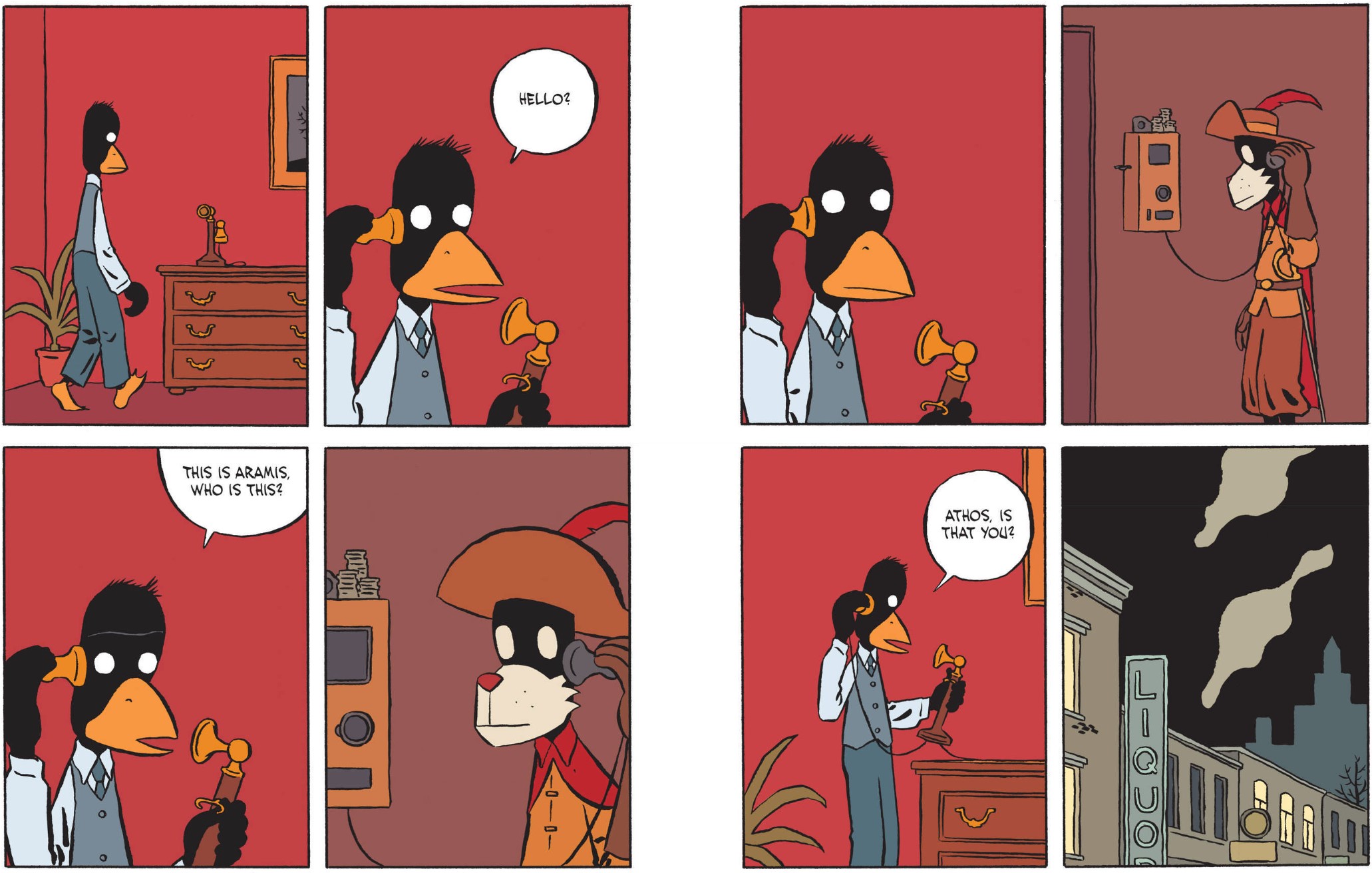

By Gardner F. Fox, Bob Haney, Mike Friedrich, Steve Skeates, Dennis J. O’Neil, Mark Hanerfeld, Jack Miller, Michael L. Fleisher, Paul Kupperberg, Mike W. Barr, Roy Thomas, Murphy Anderson, Carmine Infantino, Ross Andru & Mike Esposito, Neal Adams, Jerry Grandenetti, Jack Sparling, Bernie Wrightson, José Delbo, Jim Aparo, Frank Thorne, Ernie Chan, Michael R. Adams, Rick Hoberg, Jerry Ordway, Richard Howell, Larry Houston, Gerald Forton & various (DC Comics)
ISBN: 978-1-4012-3417-1 (TPB)
This book includes Discriminatory Content produced in less enlightened times
This stunning compilation is another long-awaited full colour chronolgically curated compilation delivering “affordably priced, large- paperback collections” highlighting DC’s past glories. Sadly, none are yet available digitally, as were the last decade’s Bronze, Silver and Golden Age collections, but we live in hope…
Win’s Christmas Gift Recommendation: Sublime Seasonal Spookfest for Comics Addicts… 10/10
Created by Jerry Siegel & Bernard Baily in 1940 and debuting via a 2-part origin epic in More Fun Comics #52 & 53, The Spectre is one of the oldest characters in DC’s vast character stable. Crucially, just like Siegel’s other iconic creation, the Ghostly Guardian soon began suffering from a basic design flaw: he was just too darn powerful. However, unlike Superman this relentless champion of justice is already dead, so he can’t really be logically or dramatically imperilled. Moreover, in those far off early days that wasn’t nearly as important as sheer spectacle: forcibly grabbing the reader’s utter attention and keeping it stoked to a fantastic fever pitch.
Starting as a virtually omnipotent phantom, the Astral Avenger evolved over various revivals, refits and reboots into a tormented mortal soul bonded inescapably to the actual embodiment of the biblical Wrath of God…
The story is a genuinely gruesome one: police detective Jim Corrigan is callously executed by gangsters before being called back to the land of the living. Commanded to fight crime and evil by a glowing light and disembodied voice, he was indisputably the most formidable hero of the Golden Age. He has been revamped many times, and in the 1990s was revealed to be God’s own Spirit of Vengeance wedded to a human conscience. When Corrigan was finally laid to rest, Hal (Green Lantern) Jordan and murdered Gotham City cop Crispus Allen replaced him as the mitigating conscience of the unstoppable, easily irked force of Divine Retribution. Last time I looked, Corrigan had the job again…
However, the true start of that radically revitalised career began in the superhero-saturated mid-1960s when, hot on the heels of feverish fan-interest in the alternate world of the Justice Society of America and Earth-2 (where all their WWII heroes retroactively resided), DC began trying out solo revivals of 1940’s characters, as a counterpoint to such wildly successful Silver Age reconfigurations as Flash, Green Lantern, Atom and Hawkman…
This colossal compilation documents the almighty Man of Darkness’ resurrection in the Swinging Sixties, his landmark reinterpretation in the horror-soaked, brutalised 1970s and even finds room for some later appearances before the character was fully de-powered and retrofitted for the post-Crisis on Infinite Earths DC Universe. As such, this Spectre-acular tome of terror (660 subtly sinister peril-packed pages!) re-presents material from Showcase #60, 61 & 64; team-up tales from The Brave and the Bold #72, 75, 116, 180 & 199; The Spectre #1-10; lead strips from Adventure Comics #431-440: a tryptich serial from horror-anthology Ghosts #97-99 and a wartime-set saga from JSA retro hit All-Star Squadron #27-28: cumulatively channelling January/February 1966 to December 1983.
Back in the Sixties DC had attempted a number of Earth-2 team-iterations (Starman & Black Canary – with Wildcat – in The Brave and the Bold #61-62, whilst Showcase #55 & 56 spotlighted Doctor Fate & Hourman, with a cameo from the original Green Lantern), but inspirational editor Julie Schwartz & scripter Gardner F. Fox only finally achieved their ambition to relaunch a Golden Age hero into his own title with the revival of the Ghostly Guardian in Showcase. It had been hard going and perhaps ultimately happened only thanks to a growing general public taste for supernatural stories…
After three full length appearances and many guest-shots, The Spectre won his own solo series at the end of 1967, just as the superhero craze went into steep decline, but arguably Showcase #60 (cover-dated January/February 1966 but actually on sale from Novenember 25th 1965) anticipated the rise of supernatural comics by re-introducing Corrigan and his phantom passenger in ‘War That Shook the Universe’ by Earth-2 team supreme Fox & illustrator Murphy Anderson. This spectacular saga reveals why the Heroic Haunt had vanished two decades previously, leaving fundamentally human (but dead) Corrigan to pursue his war against evil on merely mortal terms – until a chance encounter with a psychic investigator frees the spirit buried deep within him. A diligent search reveals that, 20 years previously, a supernal astral invader broke into the Earth plane and possessed a mortal, but was so inimical to our laws of reality that both it and the Grim Ghost were locked into their meat shells until now…
Thus began a truly Spectre-acular (feel free to groan, but that’s what they called it back then) clash with devilish diabolical Azmodus that spans all creation and blew the minds of us gobsmacked kids…
Showcase #61 (March/April) upped the ante as even more satanic Shathan the Eternal subsequently insinuates himself into our realm from ‘Beyond the Sinister Barrier’: stealing mortal men’s shadows until he is powerful enough to conquer the physical universe. This time The Spectre treats us to an exploration of the universe’s creation before narrowly defeating the source of all evil…
The Sentinel Spirit paused before re-manifesting in Showcase #64 (September/October 1966) for a marginally more mundane but no less thrilling case after ‘The Ghost of Ace Chance’ takes up residence in Jim’s body. By this time, it was established that ghosts need a mortal anchor to recharge their ectoplasmic “batteries”, with this unscrupulous crooked gambler determined to inhabit the best frame available…
Try-out run concluded, the editors sat back and waited for sales figures to dictate the next move. When they proved inconclusive, Schwartz orchestrated a concerted publicity campaign to further promote Earth-2’s Ethereal Adventurer. Thus The Brave and the Bold #72 (June/ July 1967) saw the Sentinel Spook clash with Earth-1’s Scarlet Speedster in ‘Phantom Flash, Cosmic Traitor’ (by Bob Haney, Carmine Infantino & Charles “Chuck” Cuidera). This sinister saga sees the mortal meteor arcanely transformed into a sinister spirit-force and power-focus for expired but unquiet American aviator Luther Jarvis who returns from his death in 1918 to wreak vengeance on the survivors of his squadron – until the Spectre intervenes…
Due to the vagaries of comic book scheduling, B&B #75 (December 1967/January 1968) appeared at around the same time as The Spectre #1, although the latter had a cover-date of November/December 1967. In this edition it follows the debut of the haunted hero in his own title…

‘The Sinister Lives of Captain Skull’, by Fox & Anderson, divulges how the botched assassination of American Ambassador Joseph Clanton and an experimental surgical procedure allows one of the diplomat’s earlier incarnations to seize control of his body and, armed with mysterious eldritch energies, run amok on Earth. These “megacyclic energy” abilities enable the revenant to harm and potentially destroy the Grim Ghost, compelling the Spectre to pursue the piratical Skull through a line of previous lives until he can find their source and purge the peril from all time and space. Meanwhile over in the Batman team-up tale – scripted by Haney and limned by Ross Andru & Mike Esposito – Ghostly Guardian joins Dark Knight to liberate Earth-One Gotham City’s Chinatown from ‘The Grasp of Shahn-Zi!’: an ancient oriental sorcerer determined to prolong his reign of terror at the expense of an entire community and through the sacrifice of an innocent child, after which the Astral Avenger proceeded on Earth-Two in his own title…

With #2 (January/February 1968) artistic iconoclast Neal Adams came aboard for Fox-scripted mystery ‘Die Spectre – Again’ wherein crooked magician Dirk Rawley accidentally manifests his etheric self and severely tests both Corrigan and his phantom lodger as they seek to end the double-menace’s string of crimes, mundane and magical. At this time, the first inklings of a distinct separation and individual identities began. The two halves of the formerly sole soul of Corrigan were beginning to disagree and even squabble…
Neophyte scripter Mike Friedrich joined Adams for #3’s ‘Menace of the Mystic Mastermind’ wherein pugilistic paragon Wildcat faces the inevitable prospect of age and infirmity even as an inconceivable force from another universe possesses petty thug Sad Jack Dold, turning him into a nigh-unstoppable force of cosmic chaos.

Next, ‘Stop that Kid… Before He Wrecks the World’ was written & illustrated by Adams with a similar trans-universal malignity deliberately empowering a young boy as a prelude to its ultimate conquest, whilst #5’s ‘The Spectre Means Death?’ (all Adams again) appears to show the Astral Adept transformed into a pariah and deadly menace to society, until Corrigan’s investigations uncover emotion-controlling villain Psycho Pirate at the root of the Heroic Haunt’s problems…
Despite the incredible talent and effort lavished upon it, The Spectre simply wasn’t finding a big enough audience. Adams left for superhero glory elsewhere and a hint of changing tastes emerged as veteran horror comics illustrator Jerry Grandenetti came aboard. Issue #6 (September/October 1968) saw his eccentric, manic cartooning adding raw wildness to the returning Fox’s moody thriller ‘Pilgrims of Peril!’ Anderson also re-enlisted, applying a solid ink grounding to the story of a sinister quartet of phantom Puritans who invade the slums of Gateway City, driving out the poor and hopeless as they hunt long-lost arcane treasures. These would allow demon lord Nawor of Giempo access to Earth unless Spectre can win his unlife or death duel with the trans-dimensional horror…
As the back of #7 was dedicated to a solo strip starring Hourman (not included here), The Spectre saga here – by Fox, Grandenetti & Anderson – was a half-length tale following the drastic steps necessary to convince the soul of bank-robber Frankie Barron to move on. As he was killed during a heist, the astral form of aversion therapy used to cure ‘The Ghost That Haunted Money!’ proves not only ectoplasmically effective but outrageously entertaining…
Issue #8 (January/February 1969) was scripted by Steve Skeates and began a last-ditch and obviously desperate attempt to turn The Spectre into something the new wave of anthology horror readers would buy.
As a twisted, time-lost apprentice wizard struggles to return to Earth after murdering his master and stealing cosmic might from the void, on our mundane plane an exhausted Ghostly Guardian neglects his duties and is taken to task by his celestial creator. As a reminder of his error, the Penitent Phantasm is burdened by a fluctuating weakness – which would change without warning – to keep him honest and earnest. What a moment then, for desperate disciple Narkran to return, determined to secure an elevated god-like existence by securing ‘The Parchment of Power Perilous!’…
The Spectre #9 completed the transition, opening with an untitled short from Friedrich (illustrated by Grandenetti & Bill Draut) finding the Man of Darkness again overstepping his bounds by executing a criminal. This prompts Corrigan to refuse the weary wraith the shelter of his reinvigorating form and when the Grim Ghost then assaults his own host form, the Heavenly Voice punishes the spirit by chaining him to the dreadful Journal of Judgment: demanding he atone by investigating the lives inscribed therein in a trial designed to teach him again the value of mercy.
The now anthologised issue continued with ‘Abraca-Doom!’ (Dennis J. O’Neil & Bernie Wrightson) as The Spectre attempts to stop a greedy carnival conjurer signing a contract with the Devil, whilst ‘Shadow Show’ – by Mark Hanerfeld & Jack Sparling – details the fate of a cheap mugger who thinks he can outrun the consequences of a capital crime. The Spectre gave up the ghost, folding with #10 (May/June 1969), but not before a quartet of tantalising tales shows what might have been. ‘Footsteps of Disaster’ (Friedrich, Grandenetti & George Roussos) follow a man from cradle to early grave, revealing the true wages of sin, whilst ‘Hit and Run’ (Steve Skeates & Jose Delbo) proves again that the Spirit of Judgment is not infallible and even human scum might be redeemed. Jacks Miller & Sparling asked ‘How Much Can a Guy Take?’ with a shoeshine boy pushed almost too far by an arrogant mobster before the series closed with a cunning murder mystery involving what appeared to be a killer ventriloquist’s doll in Miller, Grandenetti & Roussos’ ‘Will the Real Killer Please Rise?’ With that the Astral Avenger returned to comic book limbo for nearly half a decade until changing tastes and another liberalising of the Comics Code saw him arise as lead feature in Adventure Comics #431 (January/February 1974) for a shocking run of macabre, ultra-violent tales from Michael L. Fleisher, Jim Aparo and friends
‘The Wrath of… The Spectre’ offered a far more stark, unforgiving take on the Sentinel Spirit; reflecting the increasingly violent tone of the times. Here, a gang of murderous thieves slaughter the crew of a security truck and are tracked down by a harsh, uncompromising police lieutenant named Corrigan. When the bandits are exposed, the cop unleashes a horrific green and white apparition from his body which inflicts ghastly punishments horrendously fitting their crimes.
With art continuity (and no, I’m not sure what that means either) from Russell Carley, the draconian encounters continue in #432 as in ‘The Anguish of… The Spectre’ assassins murder millionaire Adrian Sterling and Corrigan meets the victim’s daughter. Although the now-infallible Wrathful Wraith soon exposes and excises the culprits, the dead detective has to reveal his true nature to grieving Gwen. Moreover, Corrigan begins to feel the stirring of impossible, unattainable yearnings…
Adventure #433 exposed ‘The Swami and… The Spectre’ with Gwen seeking spiritual guidance from a ruthless charlatan who promptly pays an appalling price when he finally encounters an actual ghost, whilst #434’s ‘The Nightmare Dummies and… The Spectre’ (with additional pencils by Frank Thorne), reveals a plague of department store mannequins running wild in a killing spree at the behest of a crazed artisan who believes in magic – but cannot imagine the cost of his dabbling. AC #435 introduces journalist Earl Crawford who tracks ghastly fallout of the vengeful spirit’s anti-crime campaign in ‘The Man Who Stalked The Spectre!’ Of course, once he sees the ghost in grisly action, Crawford realises the impossibility of publishing this scoop…
Adventure #436 finds Crawford still trying to sell his implausible story as ‘The Gasmen and… The Spectre’ sets the Spectral Slaughterman on the trail of a gang who kill everyone at a car show as a simple demonstration of intent before blackmailing the city. Their gorily inescapable fate only puts Crawford closer to exposing Corrigan…

Meanwhile elsewhere, Haney & Aparo reunite Batman, Detective Corrigan and a far kinder Spectre for Brave and the Bold #116’s ‘Grasp of the Killer Cult’, as the heroes hunt WWII veterans targetted by the spirits of dead Kali worshippers on a murder spree to generate enough arcane energy to resurrect their goddess, before Adventure #437’s ‘The Human Bombs and… The Spectre’ (pencilled by Ernie Chan with Aparo inks) sees a kidnapper abduct prominent persons – including Gwen – to further a mad scheme to amass untold wealth… until the Astral Avenger ends both financial aspirations and deadly depredations forever.
Despite critical acclaim – and popular controversy – the weird writing was on the wall for the grimmest ghost ever and AC #438 heralded the beginning of the end in Fleischer, Chan & Aparo’s ‘The Spectre Haunts the Museum of Fear’. Here a deranged taxidermist turns people into unique dioramas until the original spirit of vengeance intervenes. The end was in sight again for the Savage Shade and #439’s ‘The Voice that Doomed… The Spectre’ (all Aparo art) turns the wheel of death full circle, as the Heavenly Presence who created him allows Corrigan to fully live again so that he can marry Gwen. Sadly, it’s only to have the joyous hero succumb to ‘The Second Death of The… Spectre’ in the next, last issue (#440, July/ August 1975) before tragically resuming his never-ending mission. This milestone serial set a stunning new tone and style for the Ghostly Guardian which has informed each iteration ever since…

By the early 1980s, the latest horror boom had exhausted itself and DC’s anthology comics were disappearing. As part of the effort to keep them alive, Ghosts featured a 3-part serial starring “Ghost-Breaker” and inveterate sceptic Dr. Terry 13 who at last encounters ‘The Spectre’ in issue #97 (February 1981, by Paul Kupperberg, Michael R. Adams & Tex Blaisdell). Here, terrorists invade a high society séance and are summarily dispatched by the inhuman poetic justice of a freshly-manifested Astral Avenger. Resolved to destroy the sadistic revenant vigilante, recently converted true beliver Dr. 13 returns in #98 when‘The Haunted House and The Spectre’ finds the Ghost-Breaker interviewing Earl Crawford and subsequently discovering the long-sought killer of his own father. Before 13 can act, however, the Spectre appears to hijack his justifiable retribution…
The drama ends in Ghosts #99 as ‘Death… and The Spectre’ (inked by Tony DeZuñiga) sees scientist and spirit locked in one final furious confrontation. Then more team-up classics from Brave and the Bold follow, beginning with ‘The Scepter of the Dragon God’ (by Fleisher & Aparo from #180, November 1980). Although Chinese wizard Wa’an-Zen steals enough mystic artefacts to conquer Earth and destroy The Spectre, he gravely underestimates the skill and bravery of merely mortal Batman, before #199’s ‘The Body-napping of Jim Corrigan’ (June 1983 by Mike W. Barr, Andru & Rick Hoberg), depicts the undead investigator baffled by the abduction and disappearance of his mortal host. Even though he cannot trace his own body, the Spectre knows where the World’s Greatest Detective hangs out…
This staggering compendium of supernatural thrillers concludes with a two-part saga from revivalist treat All-Star Squadron #27 & 28 as Roy Thomas, Jerry Ordway, Richard Howell, Larry Houston & Gerald Forton take us back to embattled 1942 where America’s greatest superheroes strive against the last outbreak of fascist tendencies.
Here the Golden Age Superman, Batman and Robin join Doctor Fate, Tarantula, Firebrand, The Atom, Hawkman, Phantom Lady, Amazing Man, Commander Steel, Dr. Mid-nite, Starman, Sandman, Flash, The Guardian, Johnny Thunder, Green Lantern, Johnny Quick, Liberty Belle and Wonder Woman go in search of a missing ghostly Guardian only to learn ‘A Spectre is Hanting the Multiverse!’ with the mightiest being in creation enslaved to pan-dimensional tyrant Kulak, High Priest of Brztal and facilitating a long-anticipated scheme to eradicate Earth, it’s no small mercy that humanity has other uncanny defenders – such as Sargon the Sorceror – to call upon…
Although an incongruously superhero-heavy tale to end on this compilation covers much of the darlest corners of DC legend and fable. With covers by Anderson, Infantino, Jack Adler, Adams, Grandenetti, Nick Cardy, Aparo, Tatjana Wood, George Tuska, Anthony Tollin & Jerry Ordway, and ranging from fabulously fantastical to darkly, violently enthralling, these comic masterpieces perfectly encapsulate the way superheroes changed over a brief 20-year span, but remain throughout some of the most beguiling and exciting tales of the company’s canon. If you love comic books you’d be crazy to ignore this one.
© 1966, 1967, 1968, 1969, 1974, 1975, 1981, 1983, 2012 DC Comics. All Rights Reserved.
On this day in 1867 strip pioneer Winsor McCay was born. Check out Daydreams and Nightmares – The Fantastic Visions of Winsor McCay for more.
Today in 1938 Belgian giant Raoul Cauvin was born. Bluecoats volume 18: Duel in the Channel was the last book of his we covered, whilst in 1946, the first issue of Le Journal de Tintin went on sale. Stuff from there like Blake and Mortimer is all over this site. Just use the search box and see…

